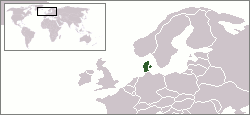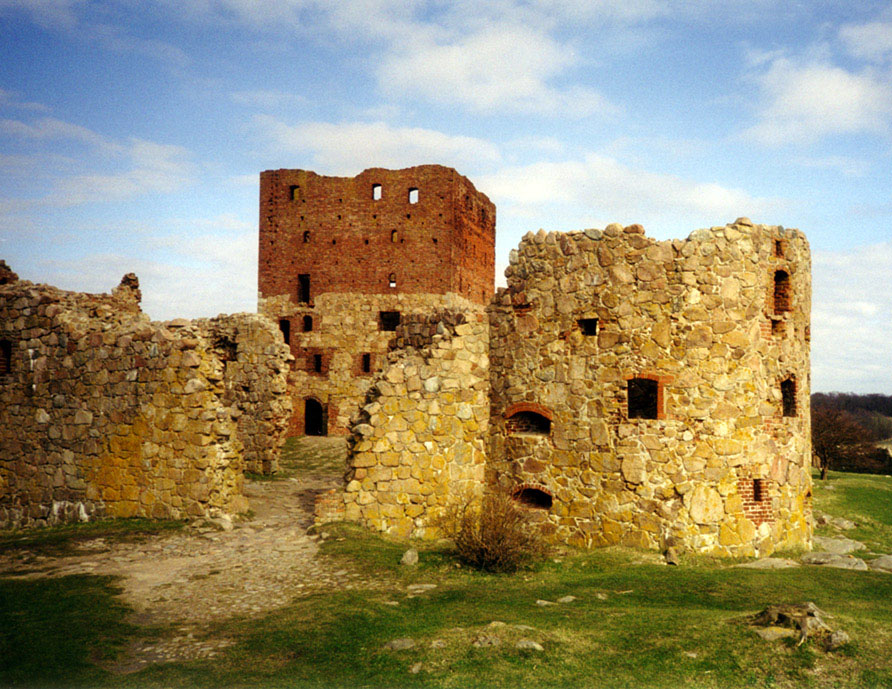|
Bornholm Butterfly Park
Bornholm Butterfly Park ( da, Bornholms Sommerfuglepark) is located on the western outskirts of Nexø on the Danish island of Bornholm. Over a thousand brightly coloured butterflies from around the world can be seen in a large former hothouse while wild Danish species abound in the flowery garden."Bornholm Butterfly Part" , Enjoy Bornholm. Retrieved 11 November 2012. Description The butterfly park was founded in 1997 in a former nursery garden. Visitors can experience the many different species in natural surroundings. Mating can also be seen as well as the development of eggs into caterpillars and chrysalises. In the butterfly house there are also |
Nexø
Nexø, sometimes spelled Neksø ( sv, Nexö), is a town on the east coast of the Baltic island of Bornholm, Denmark. With a population of 3,668 (as of 1 January 2022), it is the second largest town, as well as the largest fishing port on the island. Fishing was previously the mainstay of the town's economy. Nexø is also the site of a distillery (Bornholmske Spiritfabrik ApS) and a mustard factory (Bornholmersennep ApS). The town is also a port of call for the passenger ferries linking Bornholm with Kołobrzeg in Poland. Dueodde, the largest beach on Bornholm, is located south of Nexø, in the southeastern corner of the island. Etymology "Nexø" is possibly a combination of the Old Norse elements "nøkke", meaning Nix or water spirit, and "sæ" (sea). It was first documented in 1346 as ''Nexe''. [...More Info...] [...Related Items...] OR: [Wikipedia] [Google] [Baidu] |
Papilio
''Papilio'' is a genus in the swallowtail butterfly family, Papilionidae, as well as the only representative of the tribe Papilionini. The word ''papilio'' is Latin for butterfly. It includes the common yellow swallowtail (''Papilio machaon''), which is widespread in the Northern Hemisphere and the type species of the genus, as well as a number of other well-known North American species such as the western tiger swallowtail ('' Papilio rutulus''). Familiar species elsewhere in the world include the Mormons ('' Papilio polytes'', '' Papilio polymnestor'', '' Papilio memnon'', and '' Papilio deiphobus'') in Asia, the orchard and Ulysses swallowtails in Australia (''Papilio aegeus'', '' Papilio ulysses'', respectively) and the citrus swallowtail of Africa (''Papilio demodocus''). Older classifications of the swallowtails tended to use many rather small genera. More recent classifications have been more conservative, and as a result a number of former genera are now absorbed within ... [...More Info...] [...Related Items...] OR: [Wikipedia] [Google] [Baidu] |
Tourist Attractions In Denmark
Tourism in Denmark is a growing industry and a major economic contributor: tourists spent a total of DKK 128 billion and the tourism industry employed 161,999 people in full time positions in 2017. In 2018, tourists from Denmark's neighboring countries, Germany, Norway, and Sweden, comprised the majority of foreign tourists. That year also saw 30 million international arrivals. The number of overnight visitors has been slightly increasing since 2014; in 2018, 16.6 million tourists stayed overnight. Denmark has long stretches of sandy beaches, attracting many tourists in the summer, with Germany accounting for most foreign visitors. Swedish and Norwegian tourists often come to visit the relatively lively city of Copenhagen, while many young Scandinavians come for Denmark's comparably cheap and readily accessible beer, wines and spirits. As Europe's oldest kingdom and the home of Hans Christian Andersen, Denmark is often marketed as a "fairytale country". The term is so ingr ... [...More Info...] [...Related Items...] OR: [Wikipedia] [Google] [Baidu] |
List Of Lepidoptera Of Denmark
The Lepidoptera of Denmark consist of both the butterflies and moths recorded from Denmark. Butterflies Hesperiidae *'' Carterocephalus silvicola'' (Meigen, 1829) *''Erynnis tages'' (Linnaeus, 1758) *'' Hesperia comma'' (Linnaeus, 1758) *'' Heteropterus morpheus'' (Pallas, 1771) *''Ochlodes sylvanus'' (Esper, 1777) *'' Pyrgus armoricanus'' (Oberthur, 1910) *''Pyrgus malvae'' (Linnaeus, 1758) *''Pyrgus serratulae'' (Rambur, 1839) *''Thymelicus lineola'' (Ochsenheimer, 1808) *''Thymelicus sylvestris'' (Poda, 1761) Lycaenidae *''Agriades optilete'' (Knoch, 1781) *'' Aricia agestis'' (Denis & Schiffermüller, 1775) *''Aricia artaxerxes'' (Fabricius, 1793) *'' Callophrys rubi'' (Linnaeus, 1758) *''Celastrina argiolus'' (Linnaeus, 1758) *''Cupido minimus'' (Fuessly, 1775) *'' Cyaniris semiargus'' (Rottemburg, 1775) *''Eumedonia eumedon'' (Esper, 1780) *''Favonius quercus'' (Linnaeus, 1758) *'' Glaucopsyche alexis'' (Poda, 1761) *''Lycaena alciphron'' (Rottemburg, 1775) *''Lycaena dispar ... [...More Info...] [...Related Items...] OR: [Wikipedia] [Google] [Baidu] |
Painted Lady
''Vanessa cardui'' is the most widespread of all butterfly species. It is commonly called the painted lady, or formerly in North America the cosmopolitan. Description File:Vanessa cardui MHNT CUT 2013 3 14 Pontfaverger-Moronvilliers Dos.jpg, Dorsal side File:Vanessa cardui MHNT CUT 2013 3 14 Pontfaverger-Moronvilliers Ventre.jpg, Ventral side File:Vanessa cardui - egg 02 (HS).jpg, Egg File:Vanessa cardui - caterpillar 07 (HS).jpg, Larva File:Vanessa cardui - pupa 03 (HS).jpg, Pupa File:Painted Lady Chrysalis micro CT.jpg, Inside Pupa File:Vanessa cardui - chrysalis and emergence.jpg, Emergence Distribution ''V. cardui'' is one of the most widespread of all butterflies, found on every continent except Antarctica and South America. In Australia, ''V. cardui'' has a limited range around Bunbury, Fremantle, and Rottnest Island. However, its close relative, the Australian painted lady (''V. kershawi'', sometimes considered a subspecies) ranges over half the continent. Othe ... [...More Info...] [...Related Items...] OR: [Wikipedia] [Google] [Baidu] |
Small Tortoiseshell
The small tortoiseshell (''Aglais urticae'') is a colourful Eurasian butterfly in the family Nymphalidae. Adults feed on nectar and may hibernate over winter; in warmer climates they may have two broods in a season. While the dorsal surface of the wings is vividly marked, the ventral surface is drab, providing camouflage. Eggs are laid on the common nettle, on which the larvae feed. Description It is a medium-sized butterfly that is mainly reddish orange, with black and yellow markings on the forewings as well as a ring of blue spots around the edge of the wings. It has a wingspan ranging from 4.5 to 6.2 cm. Technical description A bright foxy red ground-colour; the forewing with 3 black costal spots, whose interspaces are yellow, there being a larger black spot in the middle of the hindmarginal area and two smaller ones in the disc between the 3 radial and 2 median; hindwing with the basal half black; both wings with black submarginal band bearing blue spots. Underside of ... [...More Info...] [...Related Items...] OR: [Wikipedia] [Google] [Baidu] |
Anthocharis Cardamines
''Anthocharis cardamines'', the orange tip, is a butterfly in the family Pieridae, which contains about 1,100 species. ''A. cardamines'' is mainly found throughout Europe and temperate Asia (Palearctic) The males feature wings with a signature orange pigmentation, which is the origin of ''A. cardamines''' common name. Males and females of this species occupy different habitats: males mostly frequent the edges of forests whereas females frequent meadows. ''A. cardamines'' feeds on most plants found within its habitat but the females selectively oviposit on young inflorescence of crucifers. Mating is usually controlled by females as virgin females found in flight are always pursued by males immediately. Females can signal different meanings to the approaching males by using their abdomen. There is evidence that mated females have an anti-aphrodisiac and that their usage of the abdomen has a closely related function in presenting these pheromones to males. This species has been af ... [...More Info...] [...Related Items...] OR: [Wikipedia] [Google] [Baidu] |
Vanessa Atalanta
''Vanessa atalanta'', the red admiral or, previously, the red admirable, is a well-characterized, medium-sized butterfly with black wings, red bands, and white spots. It has a wingspan of about . It was first described by Carl Linnaeus in his 1758 10th edition of ''Systema Naturae''. The red admiral is widely distributed across temperate regions of North Africa, the Americas, Europe, Asia, and the Caribbean. It resides in warmer areas, but migrates north in spring and sometimes again in autumn. Typically found in moist woodlands, the red admiral caterpillar's primary host plant is the stinging nettle (''Urtica dioica''); it can also be found on the false nettle (''Boehmeria cylindrica''). The adult butterfly drinks from flowering plants like ''Buddleia'' and overripe fruit. Red admirals are territorial; females will only mate with males that hold territory. Males with superior flight abilities are more likely to successfully court females. It is known as an unusually calm but ... [...More Info...] [...Related Items...] OR: [Wikipedia] [Google] [Baidu] |
Caligo Eurilochus
''Caligo eurilochus'', the forest giant owl, is an owl butterfly (tribe Brassolini of nymphalid subfamily Morphinae) ranging from Mexico, through Central America, to the Amazon River basin in South America South America is a continent entirely in the Western Hemisphere and mostly in the Southern Hemisphere, with a relatively small portion in the Northern Hemisphere at the northern tip of the continent. It can also be described as the southe .... It is a very large butterfly, among the largest in its family, with a wingspan up to 17 centimetres. The type locality is Suriname. at Markku Savela's ''Lepidoptera and Some Other Life Forms'' Several subspecies are recognized, but many more have been proposed. The larvae feed on se ... [...More Info...] [...Related Items...] OR: [Wikipedia] [Google] [Baidu] |
Phoebis Philea
''Phoebis philea'', the orange-barred sulphur, is a species of butterfly found in the Americas including the Caribbean. The wingspan is 68 to 80 mm.Orange-barred Sulphur Butterflies of Canada There are two to three generations per year in Florida and one in the northern part of the range with adults on wing from mid to late summer. The species habitat
In ecology, the term habitat summarises the array of resources, physical and biotic factors that are present in an area, such as to support the survival and reproduction of a particular species. A species habitat can be seen as the physical ... is in tropical scrub, gardens, fields, and for ...
[...More Info...] [...Related Items...] OR: [Wikipedia] [Google] [Baidu] |
Idea Leuconoe
''Idea leuconoe'', also known as the paper kite butterfly, rice paper butterfly, large tree nymph, or in Australia the white nymph butterfly, is a butterfly known especially for its presence in butterfly house A butterfly house, conservatory, or lepidopterarium is a facility which is specifically intended for the breeding and display of butterflies with an emphasis on education. Some butterfly houses also feature other insects and arthropods. Butterf ...s and live butterfly expositions. It has a wingspan of 12 to 14 cm. The paper kite is of Southeast Asian origin, but can also be found in Northern Australia and Southern Taiwan. Larvae feed on ''Parsonsia'' species, ''Tylophora hispida'', ''Parsonsia helicandra'', ''Parsonsia spiralis'', and ''Cynanchum formosanum'' so both the butterfly and larvae are poisonous. Description The paper kite butterfly's forewings and hindwings are translucent silvery white with black spots, similar to the ''Idea lynceus''. Subspecies Lis ... [...More Info...] [...Related Items...] OR: [Wikipedia] [Google] [Baidu] |
Bornholm
Bornholm () is a Danish island in the Baltic Sea, to the east of the rest of Denmark, south of Sweden, northeast of Germany and north of Poland. Strategically located, Bornholm has been fought over for centuries. It has usually been ruled by Denmark, but also by Sweden and by Lübeck. The ruin of Hammershus, at the northwestern tip of the island, is the largest medieval fortress in northern Europe, testament to the importance of its location. Bornholm and Ertholmene comprise the last remaining Danish territory in Skåneland east of Øresund, having been surrendered to Sweden in 1658, but regained by Denmark in 1660 after a local revolt. The island is known as ("sunshine island") because of its weather and ("rock island") because of its geology, which consists of granite, except along the southern coast. The heat from the summer is stored in the rock formations and the weather is quite warm until October. As a result of the climate, a local variety of the common fig, known ... [...More Info...] [...Related Items...] OR: [Wikipedia] [Google] [Baidu] |



.jpg)



